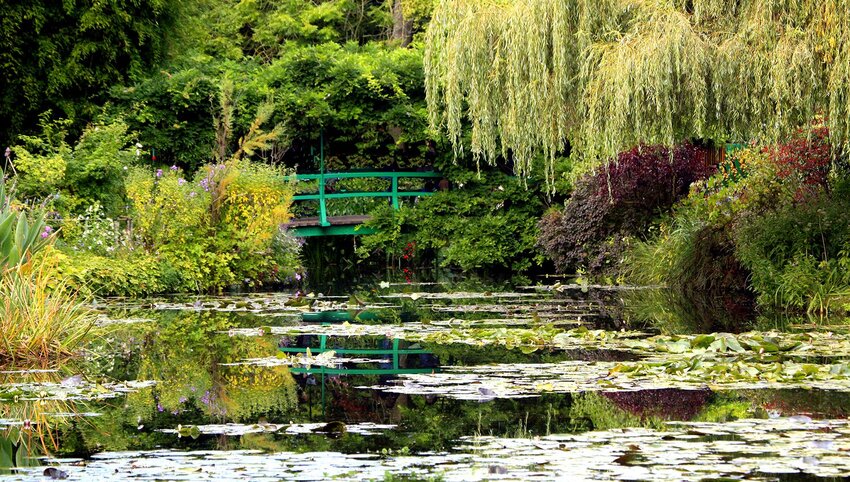Serving as a quiet respite from the ever-encroaching din of the modern world, gardens have long been a safe haven of botanical wonder. Providing a place not only for artistic expression and relaxation but also for scientific research, gardens have evolved to become a particularly crucial element of society, and an interesting addition to a travel itinerary to boot. Walk among the flowers with us in our selection of the world’s prettiest gardens.
Jardin Majorelle - Marrakech, Morocco

Featuring sky-high cacti and towering palms, Majorelle Garden in Marrakech, Morocco, is a magical world that could only be born of an artist's imagination. The garden is home to countless species of plants from around the world, all collected by the original designer and artist, Jacques Majorelle, during his travels.
Majorelle blue, the overarching color of the house and various architectural features of the garden, was created here as an homage to Moroccan pottery glazes and traditional Amazigh paint hues that Majorelle saw in the bazaars and countryside of Marrakesh. Fashion icon Yves Saint Laurent, salvaged the property in the 1980’s and brought it back to its former glory after it was abandoned following Majorelle’s divorce. Today the grounds are home to thousands of plant species, several museums, and a boutique in Saint Laurent’s honor.
Monet’s Garden - Giverny, France
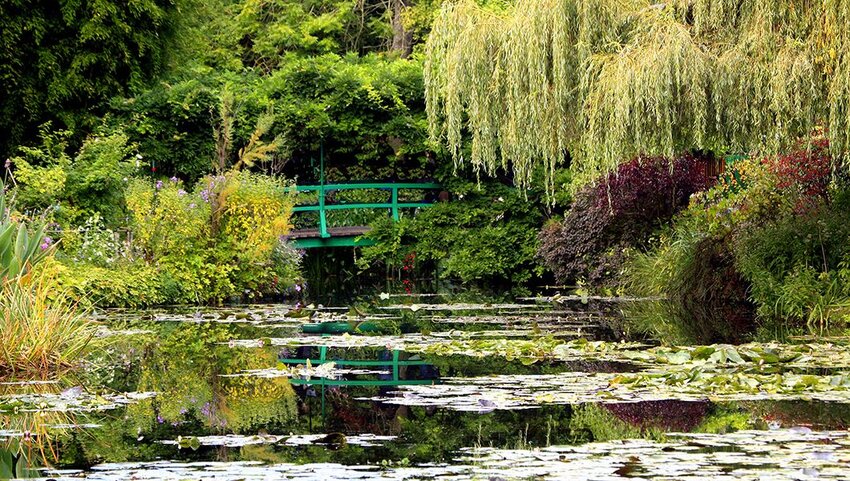
Lush willow tendrils reach affectionately towards blooming tulips at Monet's famed Garden in Giverny. Here you'll find the subjects of many of Monet's most famous paintings, from the picturesque Japanese bridge to the iconic lily pond. Monet’s Garden in Giverny, France may be the most idolized garden in the world and the epitome of anthophile heaven.
Known for its whimsical nature, Monet’s gardens, adjoining his beloved home, are made up of two distinct areas; the Clos Normand and the Water Garden. The Clos Normand is a free growing collection of flowers while the Water Garden was designed in the Japanese style and is featured in some of Monet’s most popular paintings.
Visiting Monet’s Garden is a breeze from Paris and can take as little as forty minutes by high speed train. For a more intimate experience reaching Monet’s home, rent a bike near the train station and pedal along in the idyllic French countryside to reach your destination.
Sissinghurst Castle Garden - Kensington, UK

The iconic English garden perhaps has no nonpareil than the perfectly manicured grounds at Sissinghurst Castle in Kensington, England. With 450 acres to explore, it’s not difficult to discover your own secret sanctuary among the roses.
The Sissinghurst gardens include the rose garden, white garden, and the Delos garden with other various smaller plots sprinkled throughout. Famed poet Vita Sackville-West was the architect behind the garden, and her vision for the quintessential English garden was slowly brought to life over a period of 30 years. Particularly unique to these grounds is the white garden, created entirely out of white, silver, gray, and green blooms and foliage.
Sissinghurst is one of the earliest examples of “garden rooms” which sat on either side of the main pathway. Venture further from the larger gardens here to explore rooms like The Nuttery, Orchard, and Herb Garden among many others. When you’re finished wandering, look for the Elizabethan Tower, guiding your way back to the entrance among the lofty blooms.
Ryōan-ji Rock Garden - Kyoto, Japan
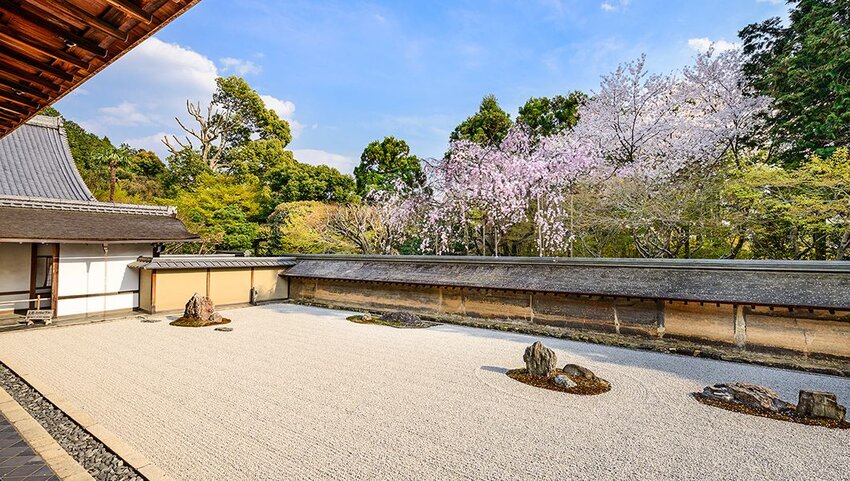
Thought to have been created in the 15th century, Ryōan-ji Temple is a UNESCO World Heritage site and famous rock garden in Kyoto, Japan. Although small, Ryoan-ji rock garden is a peaceful place for the enjoyment of nature. The gardens at Ryōan-ji Temple are an example of a dry garden or karesansui, also known as a Japanese zen garden. Japanese gardens are known for accentuating the natural landscape and being free of unnecessary ornamentation and Ryōan-ji may be one of the finest examples. The rock garden is raked in a pattern that evokes a meditative atmosphere, an important element in Zen Buddhism.
Made up of 15 larger rocks among smaller pebbles and naturally growing moss, there are many theories on what the garden depicts. View the garden in silence from the hojo, or priest's residence, as it was traditionally meant to be seen, and contemplate the meaning of its design. A singular sakura tree hangs over the walls of the temple, further adding to the garden's ethereal atmosphere when it blooms in spring. The grounds surrounding the temple are exquisite themselves, featuring a large lily pond, ancient temple buildings, torii gates, and other small gardens.
Las Pozas - Xilitla, Mexico
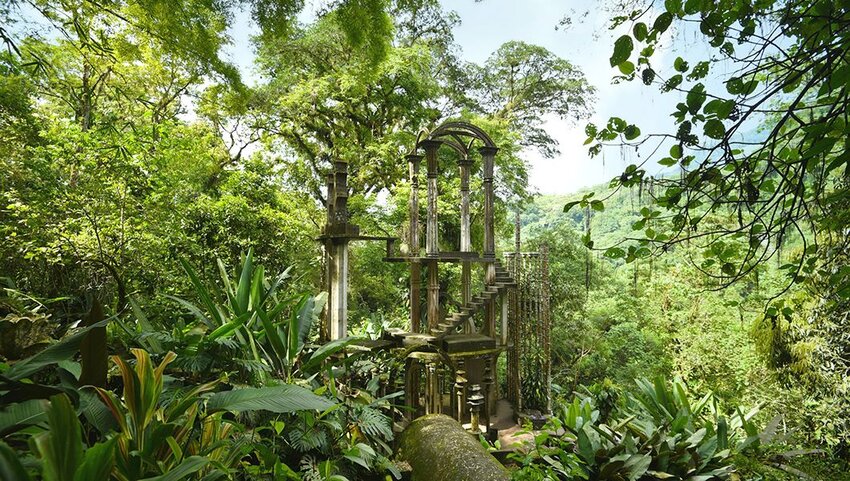
Built by the renowned poet, Edward James, Las Pozas remains a bit of a mystery. Tucked away in the mountains of San Luis Potosi in Central Mexico, Las Pozas or “The Pools” are far from a manicured garden. As an homage to James' love of Surrealism, the garden is filled with half finished architectural installations giving it a whimsical, abandoned feel.
Las Pozas gets its name from the creek that runs through the property, creating natural waterfalls and pools throughout. Most of the plants cultivated here are indigenous although James had a particular love for orchids. His original orchid collection numbered in the thousands but was unfortunately killed in a freak frost incident in the 60’s. The architectural gardens' overgrown quality lends a certain mysticism that makes a visit here truly unforgettable.
Keukenhof Gardens - Lisse, Netherlands
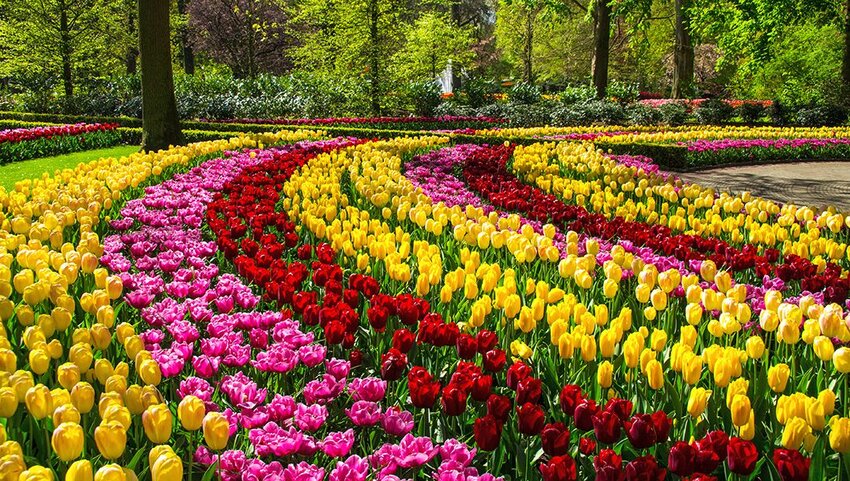
Perhaps one of the most famous and recognizable gardens in the world, the Keukenhof Gardens are a floral kaleidoscope. Created in 1857 for the Teylingen Castle, today it is the largest flower garden in the world with over 7 million blossoms that bloom each year and drawing in visitors in the same numbers.
The iconic Dutch tulip fields surround the park itself which is encompassed by traditional water canals. Take a cruise through the blooms for a unique view of the gardens and Dutch windmills lazily spinning in the distance. While seeing the tulips at peak bloom is never guaranteed, the grounds of the Keukenhof are always beautiful. If you’re in search of the iconic blooms, be sure to plan your trip between the end of March and beginning of May for the best chance at witnessing them at their peak.

